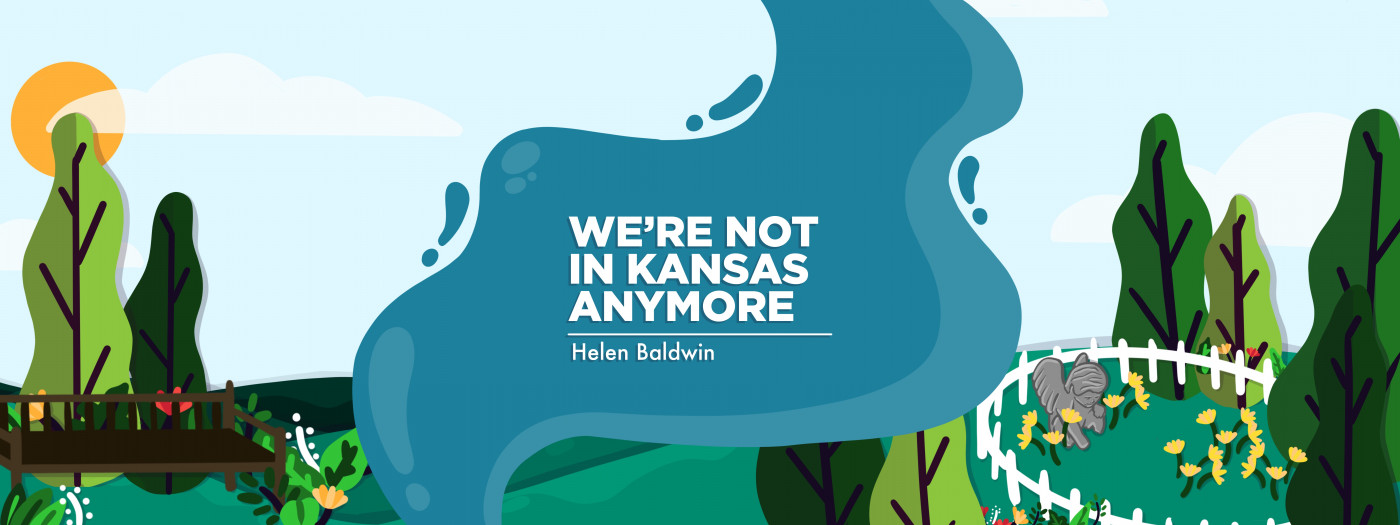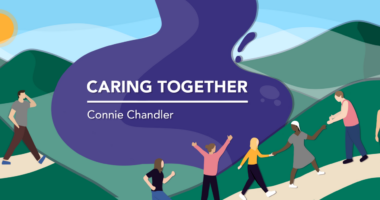I embrace the gift of giving care to loved ones
It's been a blessing to be useful at times when it really mattered

My teacher parents were hardworking, generous, creative, witty, and caring. Shortly after I began college, my beloved maternal grandmother moved into an apartment added to our family’s house. During Grandmom’s episodes of congestive heart failure, Dad took her to the emergency room every time. Genuinely happy to help, he likely treasured the opportunity to remind Grandmom how much she meant to all of us.
My brother, Paul, bumped things up a notch in the “caring for others” category by becoming a family doctor. He worked in both emergency rooms and clinics. However, Crossroads Medical Mission, which Paul cofounded for folks “falling through the cracks” of the medical system, remains his shining star.
I’ve always loved working with children. I babysat, worked in summer camps, and volunteered in special needs classrooms my freshman year of college. My husband, Randy, and I even endured a memorable stint as family teachers for teen boys in a residential treatment facility.
When the opportunity arose for us to return to school for teacher certification, Randy went first. I spent that year as a substitute teacher in the Fort Worth, Texas, school system. I requested special education classes, knowing there was a need and needing to know that special ed was actually what I wanted.
Once on the substitute call list, I subbed daily. My students’ disabilities spanned the gamut from mild to severe, with innumerable combinations of cognitive, orthopedic, and emotional challenges. The more I subbed, the more excited I became at the prospect of having my own classroom of students with special needs.
My own classroom, babies, and a surprise or two
A job opportunity called us to South Carolina as I finished my certification in special education. In Columbia, I was assigned a kindergarten class at Brockman, a small self-contained school for students with orthopedic handicapping conditions ranging from relatively mild to profound. My students relied primarily on wheelchairs, walkers, and crutches; all required varying degrees of assistance.
Our first baby, Matthew, arrived in the summer of 1986, following my first year of teaching. Three years later, our daughter, Katie, joined the family. Caring for my students and our own two children (mostly alone, thanks to Randy’s coaching duties) was exhausting but exhilarating.
My final year at Brockman took a drastic, unexpected twist. My teaching responsibilities shifted from academics to positioning, tube feeding, suctioning, and more. The stressful year seemed to last an eternity.
At the end of 1995, our family ended up in the North Carolina mountains. In May 1997, we welcomed a surprise baby. Parenting newborn Jeffrey, even in our 40s, was a cakewalk. He seemed completely content in my lap or walking in the stroller. He remained motionless as a doll during diaper changes, and he barely whimpered even when he was hungry. I’d never seen such a tranquil baby.
Turned out Jeffrey’s exceptionally placid demeanor had a name: spinal muscular atrophy (SMA) type 1.
Taking care of Jeffrey with skills from my teaching days
Once Randy and I dusted ourselves off from the crushing SMA diagnosis and prognosis (death by age 2), we went to work. Newly unemployed, Randy tended to the house and Matthew and Katie. Jeffrey was primarily my responsibility, as was scouring our newly acquired internet for information about SMA, connections to other SMA families, and hope. We were usually able to take Jeffrey together to appointments where anyone offered even the slightest glimmer of optimism: chiropractors, naturopaths, and a local Brain Gym instructor.
As SMA’s destructive nature ravaged Jeffrey’s ability to suck, swallow, and breathe, the skilled nursing knowledge I’d learned from caring for my Brockman students kicked in. Thank goodness for that, as there are a few things I don’t recall reading about in parenting or teaching manuals: suctioning your baby to revive him, administering morphine to ease his respiratory distress, telling him to “go on” when he’s obviously ready for safer territory, watching his final breaths, preparing a resting spot, planning a funeral, and knowing your child’s body is in the tiny white casket.
All of that was, however, apparently ingrained in the caregiving genes I hadn’t fully appreciated before. Those genes earned my unwavering gratitude with Jeffrey and when my parents and mother-in-law ditched their respective earthly shoes.
Learning Jeffrey wouldn’t be with our family long was wrenching. But what an honor it was to be entrusted as his earthly caregiver for that duration.
The blessing of caregiving for loved ones
Besides caring for Jeffrey, I’ve been privileged to help care for my aging parents as they progressed toward the end. In my father’s case, I ran errands and supported my mother, who insisted on caring for Dad herself until almost his last breath. As Mom’s vision declined, she required increasing assistance as I was simultaneously caring for our young grandchildren. With a lot of angel intervention, it all worked out pretty perfectly.
What a blessing it’s been to be useful in some way when it really mattered. Should a caregiving need arise again, I’ll be ready.
Note: SMA News Today is strictly a news and information website about the disease. It does not provide medical advice, diagnosis, or treatment. This content is not intended to be a substitute for professional medical advice, diagnosis, or treatment. Always seek the advice of your physician or other qualified health provider with any questions you may have regarding a medical condition. Never disregard professional medical advice or delay in seeking it because of something you have read on this website. The opinions expressed in this column are not those of SMA News Today or its parent company, Bionews, and are intended to spark discussion about issues pertaining to spinal muscular atrophy.









Leave a comment
Fill in the required fields to post. Your email address will not be published.